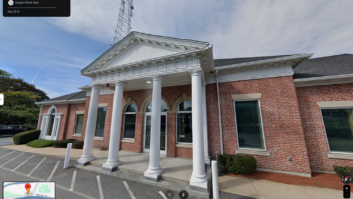Telos/Omnia Wants to Know More About Neural System, Tests
It’s great to see the spirited discussion that is emerging with regard to surround broadcasting. Only by considering the various views will we arrive at the best approach to providing this service to our listeners.
Following Mike Pappas’ article “5.1 or 2.0 Channels: Why Not Both” (Radio World Jan. 5), responding to Steve Church’s June 16 article that launched this discussion, we are compelled to respond in turn: (Quotes from Mike Pappas are in italic.)
The Neural 5225 makes outstanding conventional stereo, with a watermark from 5.1 surround sound. Center channel, low-frequency effects channel and rear surround are correctly handled and there are no surprises in the stereo mix.
With the Neural system, stereo is always derived (downmixed) from the 5.1 multichannels. Mike, if this is a satisfactory procedure, why don’t DVD-Audio and Super Audio CD disks use the same approach?
They could save a lot of bits and trouble by providing only the surround mix and letting stereo players do a mechanical downmix. But they never do, instead providing listeners with human-optimized mixes for each mode.
The KUVO test broadcasts were with a live concert that your station produced for itself in surround, right? So, what reference is available to know that there “were no surprises in the stereo mix,” since there was no stereo original for comparison?
You really need to test with DVD-Audio or SACD music as the source, so you can evaluate carefully and accurately if the stereo is OK. This is going to be critical to acceptance of a broadcast surround system since weird-sounding stereo on familiar music is certainly going to trigger protests from program directors, listeners and owners.
The watermarking is extremely robust and we haven’t been able to damage it.
What was done to try and damage it? No details were provided on the signal path for your experiment. But the exceptional claim that the Neural watermark can pass through multiple codecs with no problem requires exceptional proof!
In a recent Radio World article, Neural gave 16 kbps as its watermark bit rate. A 5-10 bits-per-second rate is considered robust in the context of anti-piracy watermarking. Experts say that around 100 bits per second would be pretty much the limit in order to withstand passage through usual codecs.
So what is going on here? What is really the rate, and what tests have been performed, under what conditions? Since the system is being proposed for analog FM as well as HD, what happens to it with multipath?
Neural’s secrecy is a barrier to making a valid assessment of their quite outrageous claims.
The advantage of the 5225 system is that the watermarked stereo can be shipped via a conventional stereo broadcast plant using all of the conventional stereo equipment that broadcasters already have, including CD recorders, MiniDisc machines, ISDN codecs, analog STL, digital STL, air processor, transmitters and editors. It makes no difference whether the plant is analog or digital.
What would happen if two pre-coded sources (music stored on a delivery system, for e.g.) were to be cross-mixed on-air? During the overlap time, wouldn’t the watermark be corrupted and the received result sound pretty bad, or collapse to stereo?
Has cross mixing been demonstrated? How would a surround or panned mic be added to the mix for voice-overs? This is something you wouldn’t have tested in your live concert demonstration, but certainly cross-mixing and announcer voice-overs are routine in normal radio programming.
Upgrading a stereo plant to discrete is not a minor issue, and when we did a study at KUVO the cost ran into the tens of thousands of dollars.
This is true with traditional analog or AES 3 set-ups. But we’re going to see computer networks taking over these obsolete technologies – and with an Ethernet networked studio approach, the incremental costs to move from stereo to discrete surround are near zero. The majority of studios on-air today are still analog and need to be upgraded to digital anyway, so the surround capability comes along for the ride. Surround, digital and networking are coming together fortuitously.
Many of the proposed 5.1 systems require the use of HD Radio transmitted bits. The number of bits these systems are proposing to use, 16 kbps, is sufficient bandwidth to support a voice-grade secondary audio channel. It is my feeling that giving up 16 kbps to support 5.1 is not a good use of a very limited amount of bandwidth.
That’s what the bits are for! Would you prefer to save those 16 kbps for a cell-phone-grade voice something or other, rather than provide a capable and compatible surround service? We respectfully disagree.
Anyway, there will probably soon be more bits to play with. Ibiquity has a proposal before the FCC to increase HD Radio’s data rate from 100 to 150 kbps and there are technologies on the horizon to deliver yet another 64 kbps within the current SCA spectral space.
Our empirically derived results indicate that the Neural 5225 system is robust, makes great audio, has rock-solid imaging and works today.
We believe in empirical results, too. The listening experience is what matters. But a live concert with material no one has heard before and with no stereo reference is no way to evaluate how a system will work for what broadcasters will use it for, day-in, day-out. We need tests with normal radio programming and production techniques.
Speaking of tests, why hasn’t Neural submitted their technology to the scrutiny of the unbiased MPEG testing that has been ongoing the past months? At what point will Neural offer an honest description of their system so it can be evaluated on a reasonable basis? Thus far it’s been a lot of smokey words and fogged mirrors.
Mike, we appreciate your enthusiasm. Surround is an impressive listening experience and you’ve heard a system that delivers it on the FM band. So naturally, you want to get on with it!
But you are proposing that broadcasters adopt a system that has had no significant on-air testing, no disclosure of technology, no comparative evaluation of performance, a single vendor source and troublesome claims.
The MPEG system we support has been carefully tested in a controlled scientific fashion with a wide variety of source audio material. Its developers include Fraunhofer Laboratory (inventors of MP3 and MPEG AAC), Agere (former Bell Labs and Lucent researchers), Coding Technologies (inventors of the “plus” enhancements to MP3 and AAC and the HD Radio codec), and Philips (co-inventor of MPEG Layer 2 and a consumer electronics firm).
Yet more testing is forthcoming as the best ideas continue to be merged from each contributor. The technology approach has been published in a number of AES and other papers so that researchers have been able to evaluate claims and build upon each other’s work.
We assume that on-air tests with normal programming are a necessary part of any evaluation process, and we expect these to start within the next months. We think radio broadcasting is important enough to deserve this care.
RW welcomes other points of view.











